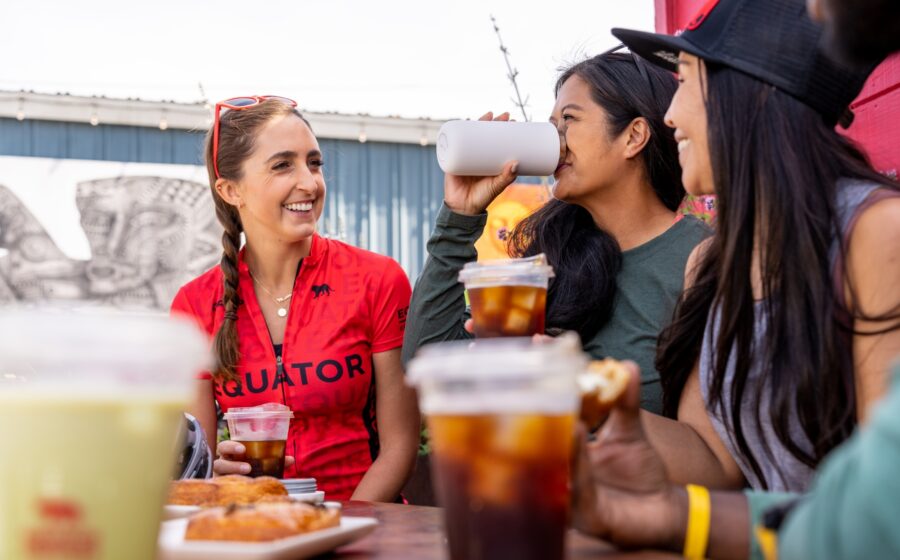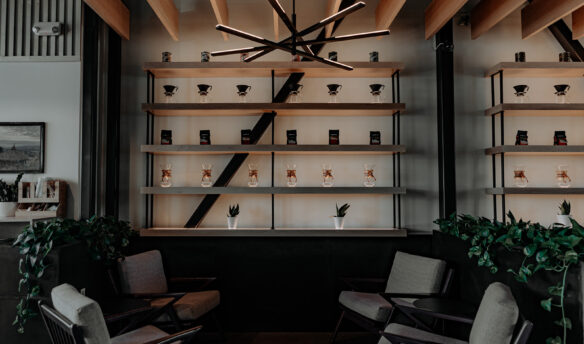Today’s cafe-goers expect a few things from the experience: good coffee, certainly, as well as stable Wi-Fi and comfortable furniture. And more and more, they’re anticipating delicious food, too.
According to IBIS World, an industry research firm, the number of coffee and snack shops (a blanket term that defines venues that serve both coffee and light bites) in the United States has increased by more than 4% since 2022. Meanwhile, despite food inflation and shrinking leisure spending, nearly 40% of survey respondents reported that they visit coffee and snack shops more than once per week.
This demand isn’t expected to slow down anytime soon, and coffee shop owners would be wise to adjust their offerings accordingly. However, implementing a food program is easier said than done. While butter croissants and everything bagels are a solid start, simply adding them to a pre-existing menu isn’t enough.
Instead, a cafe needs the physical space, food supply, labor, and legal compliance to ensure building a food menu is a solid financial investment. Everything from adhering to food safety standards to maintaining profit margins is more difficult when thinking beyond a beverage menu.
So how should coffee founders go about implementing a food program that makes sense for their businesses? We spoke to two industry experts for their insider tips.
Starting a Successful Food Program From the Ground Up
“Building a successful food program is complex, and requires thoughtful planning, attention to detail, and adequate resources,” says Tina Malouf, director of retail for Equator, a California-based mini-chain of coffee shops. “It’s essential to have experienced professionals who understand what it takes to succeed.”
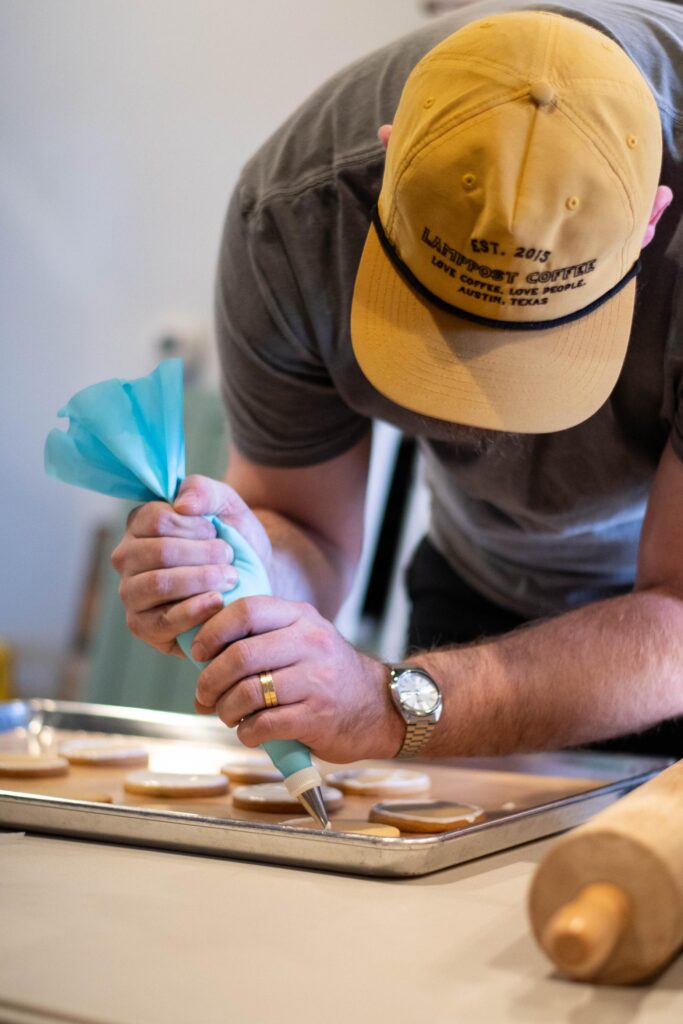
Equator began as a roasting company in a small garage back in 1995 before expanding to its current 12 locations. As it grew, it adopted a food menu of bakery and deli staples to complement its lattes and cold brew. Today, its menu items range from glazed donuts and grilled panini to quinoa grain bowls, seasonal soups, and danishes. Across the board, there’s an emphasis on freshly made meals, seasonal rotations, and tidy plating to create a memorable experience for visitors.
The menu at Equator took time to develop, so Malouf suggests taking a step back before thinking about specific food options. “Start by evaluating your space to ensure it can accommodate a food program, and check that you can obtain the necessary permits and licenses,” she says. “[And] create an efficient layout that works for both employees and customers.” Very small cafes may have more difficulty accommodating a food program, so if you have limited real estate available, you’ll need to think creatively about how to maximize space.
Once you’ve taken care of those fundamentals, there are additional factors to consider before you take the leap into food service. “Most importantly, understand what your customers are looking for—from peak traffic times to potential menu items—to determine if there’s sufficient demand for your offerings,” says Malouf. “A successful food program isn’t just about filling a menu; it’s about crafting an experience that resonates with your community and complements your coffee offerings.”
Lamppost Coffee, a roaster with cafe locations across Texas, is another multi-location coffee business that takes its food program seriously. Its menu starts off with staples like bagels, toast, and an aptly named sandwich called The Classic, made with house sausage or bacon, egg, cheddar, and a toasted English muffin. Another favorite is The Phoenix, a sweet, savory, and tart chicken sandwich with maple gastrique and a spicy ranch kick.

“To build a successful food program takes hard work, long hours, dedication to perfecting the program, and maximizing efficiency,” says Aaron Anselmi, the culinary director for Lamppost. “To know if it’s a good investment, the team and I research the market, analyze competition, and showcase ideas and skills while receiving feedback in-house.”
Given the amount of planning needed to implement a food program and keep it financially viable, doing so may pose too much strain for some business models. Not only do the logistics of a food program add even more complexity to daily operations, but the team needs to be fully on board. “Anyone who is not willing to be team-oriented, hard-working, and resourceful” shouldn’t start a food program, Anselmi says.
“A food program requires a significant investment of time and resources,” says Malouf. “The skill sets needed are quite different from those required to open and operate a cafe. Each individual should assess whether they are ready to take on the complexities of developing a food program and whether it aligns with their vision for the business.”
Setting Up a Budget
Fresh ingredients, food safety equipment, and training costs are just the beginning when it comes to budgeting for a food program. While the financial element is often the most intimidating part of the process, there are step-by-step guides and workarounds that can help ease the transition.
“A food program typically requires a significant budget,” says Malouf. “You have to consider costs for design, equipment, permits, staffing (including chefs and managers), vendor setup, inventory, and menu development. Ideally, you’d aim for a profit margin of around 60% on menu items, but there are many factors to consider before focusing solely on margins.”
Fortunately, a food program doesn’t need to be a massive undertaking from the start. Incremental additions to an existing menu can help a coffee shop gradually scale without too much financial commitment. Anselmi believes this gradual approach is viable for many cafes.

“While starting funds are extremely helpful in getting any project up and running, I believe a great idea can start small and grow with hard work,” he says. “Seeking out potential investor prospects is extremely helpful as well.”
This slow-and-steady approach also helps coffee shop owners gauge the health of their businesses. Malouf stresses the importance of customer service when measuring a food program’s success.
“Managing a food program brings additional overhead, so start by evaluating customer satisfaction and sales performance,” she says. “Ask yourself if you’re serving items you’re proud of and whether you can maintain a positive cash flow while delivering quality food and service.”
Creating Efficient Workflows
Creating a successful food program isn’t just about what you’ll serve—it’s also about how you’ll serve it.
“Adding food to your offerings requires different permits for various types of equipment, and it typically demands significant counter and refrigeration space,” says Malouf. “I highly recommend working with a professional designer who specializes in food programs to create an optimal layout.”
Since many cafe-goers enjoy telecommuting or hanging out with friends over a meal, your layout should include plenty of room to sit, stand, and walk around. Smaller shops may want to consider outdoor set-ups if they don’t have enough room inside.
Back-of-house space is also key. “You’ll also need to expand your team to include chefs, line cooks, prep cooks, dishwashers, bussers, and runners to support the food program,” Malouf says.
A small business can still make a food program work by choosing technology that accommodates—not contradicts—its limited space. Anselmi was able to find a few clever workarounds to ensure Lamppost Coffee could stay efficient. “We use a Merrychef [a high-speed oven] and a lowboy [refrigerator] for each shop for our food program, so not much changes for the layout,” he says. “Some maneuvering may have to happen with coffee equipment to maximize space and efficiency.”
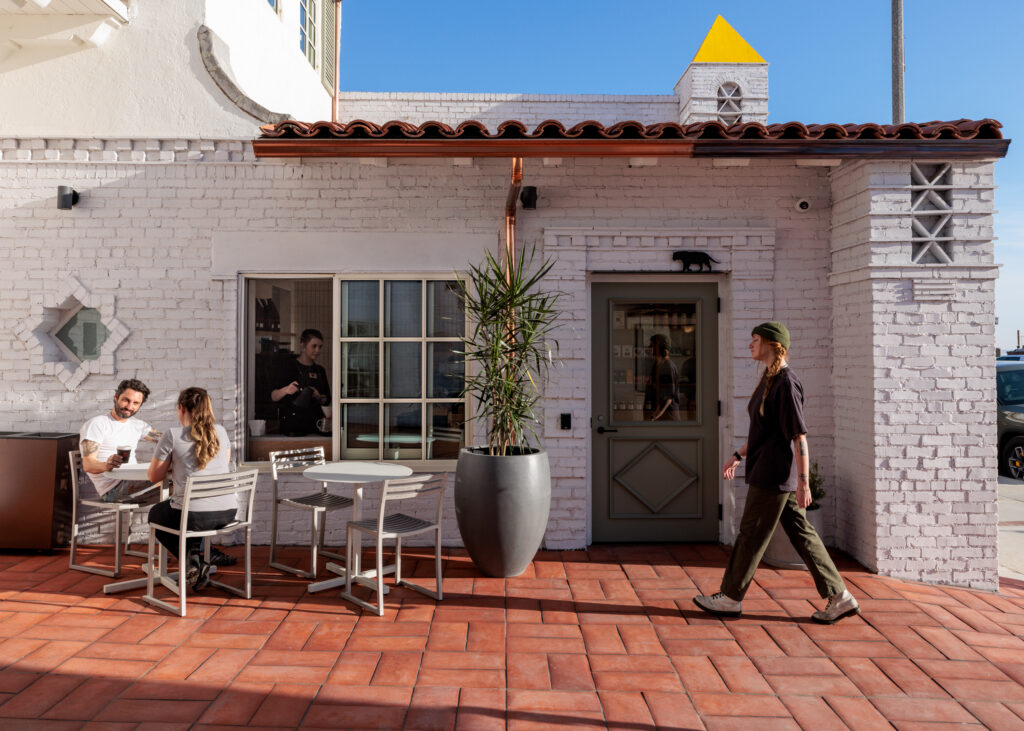
But he says it can be challenging to know exactly how a food program will flow behind the bar. “Workflows depend on how successful or busy the food program is,” he says. “Our baristas finish all the sandwiches for customers for timeliness, so we may add an extra person to just do food to keep up with expeditious service.”
What else might someone need to know to make a bigger food program flow operationally? Malouf encourages business owners to start with what works first.
“If it ain’t broke, don’t fix it. If your cafe is currently successful, don’t feel pressured to change everything—it’s perfectly fine to stick with what’s working,” she says. “Focus on refining your operations and only make changes that enhance the customer experience without compromising your established success or brand values.”
Anselmi stresses that business fundamentals shouldn’t be overlooked when starting a coffee shop’s food program. He encourages people to think critically about things like “staffing, storage, team communication, training, and great relationships with vendors.”
Trends to Keep an Eye On
The finer details of your food program may determine whether or not a customer comes back for more, including whether you source local ingredients or support area businesses.
“If you want to be a destination cafe, it’s important to have a standout menu that excites customers,” says Malouf. “Incorporating local and organic ingredients can set you apart and attract a loyal following. While these ingredients may be more expensive, consider whether your customers are willing to pay for the quality and sustainability they provide.”
Indeed, customers’ desire for locally sourced ingredients is only growing stronger. According to a 2024 survey by Finance & Commerce, 85% of Gen Z customers are willing to shop locally a few times per month, with 25% preferring a few times per week. 96% of Millennials are also actively interested in supporting their local businesses.
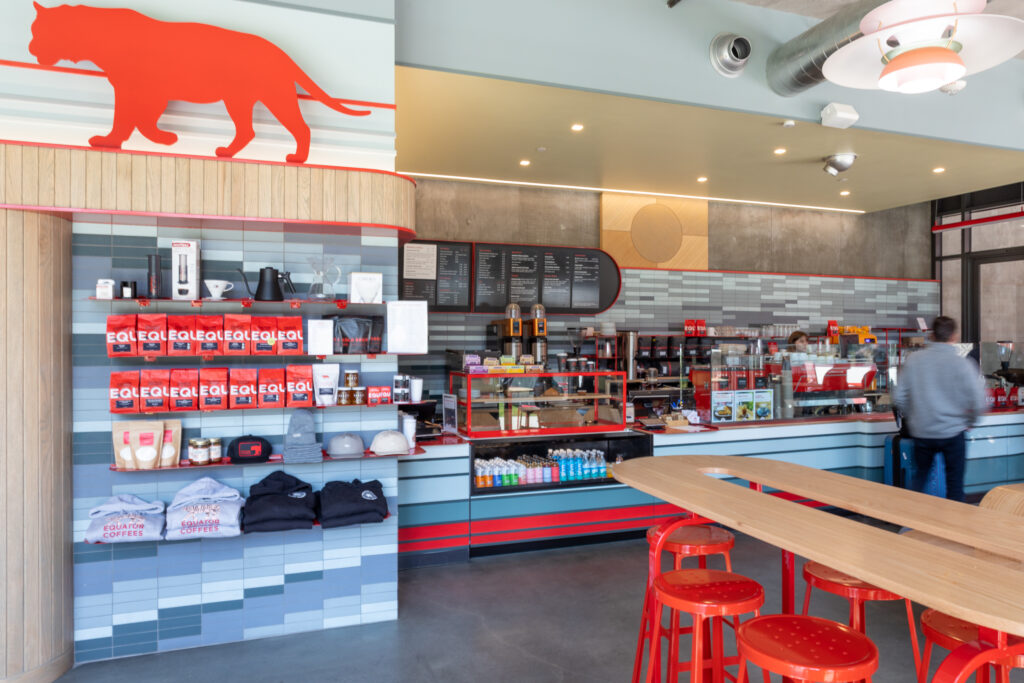
Business owners should also keep an ear to the ground when it comes to trending food items. “Food trends are always evolving,” says Malouf. “It’s a good idea to plan for seasonal menu changes based on what ingredients are at their peak, and what unique local options you have access to.”
Anselmi remains dedicated to sourcing a mixture of locally grown food and imported ingredients for Lamppost Coffee. “We gravitate towards locally sourced food and fine imported/international ingredients,” he says. “Texas takes pride in Texas products, so this helps with sourcing and getting customer attention. The quality of both is crucial nonetheless.”
But no matter the potential for unique recipes or innovative hospitality styles, don’t forget that a food program should always reflect and respond to customer demand first. Anselmi continues to do extensive research into what visitors want to keep Lamppost Coffee’s food menu going strong.
“Food trends always come and go,” he says. “Seeing what competition is offering along with what clientele gravitate towards will help keep food programs in the know.”



